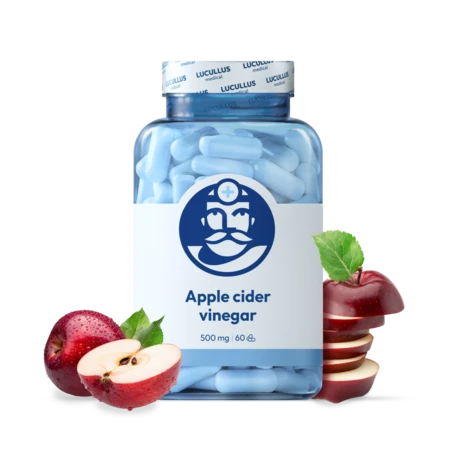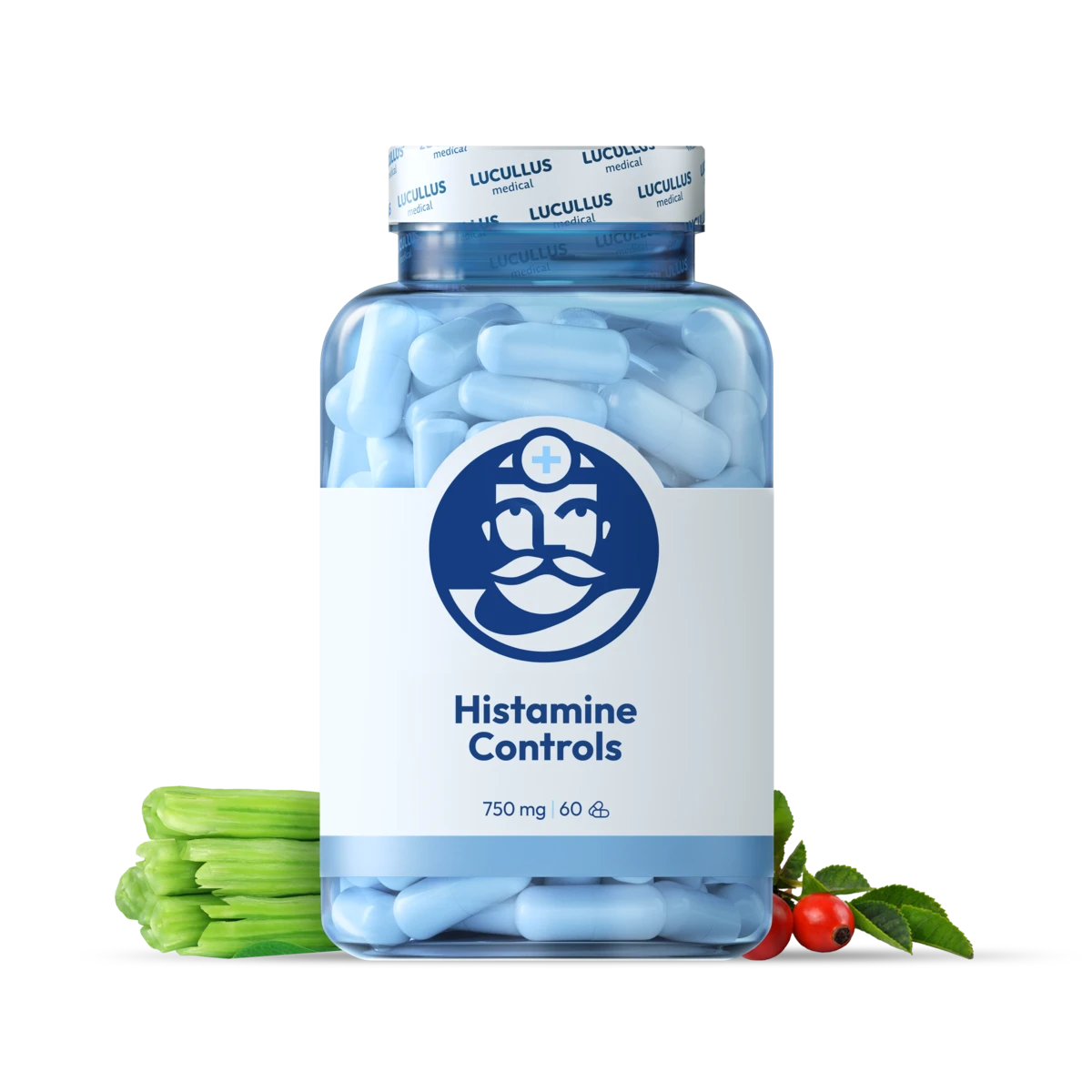
Histamine Control
Histamine is often perceived negatively, especially for its role in allergic reactions and intolerance. As with many things in life, black-and-white thinking is not suitable for this biogenic amine. As a neurotransmitter, it participates in many critical processes. In defending the body, for example, it supports the enlargement of blood vessels, making it easier for immune cells to access the site of inflammation. At the same time, it stimulates the production of gastric juices (essential for food processing), regulates the sleep cycle, controls appetite, and plays a role in learning, memory, and emotions. Histamine naturally occurs in the human body, and its balance is crucial for health. In the digestive system, it's broken down by the enzyme diamine oxidase. However, if histamine intake is greater than the body can break down, histamine intolerance develops. This imbalance can be caused by stress, poor lifestyle, medicines, or other factors. Excess histamine can lead to unpleasant symptoms, often resembling food allergies or digestive issues. It's essential to understand histamine as an important helper in our body.

B9 with a huge impact
If you were to test your diet today, you might find that despite healthy eating, you lack enough vitamin B9 - folic acid. Popular avocado toasts are in vogue, but unlike spinach, lentils, or broccoli, they don't contain much B9. Folic acid was first isolated from spinach, and although it is most commonly associated with pregnancy, its importance concerns each of us.

Vitamin A - and I see...
Vitamin A - Retinol, was discovered in 1916. But it was not until 15 years later that its chemical structure was determined. And it took another 15 years before we learned to produce it synthetically (in the form of acetate). It is relatively rare in dietary supplement stores, which is strange because its deficiency can lead to night blindness.

... to feel content and happy in your body
Why exactly collagen + C + hyaluronic acid? In short, it is an elixir of youth, this precisely characterizes the combination of 3 powerful antioxidants. By interconnecting the components, health support is increased, not just for the skin (as it may seem). Already in youth, the amount of collagen and hyaluronic acid decreases. With this trio, we safely help to replenish them and achieve healthy skin, bones, joints, veins, strong hair, and nails. Vitamin C is necessary for the biosynthesis of collagen (also for protein metabolism) and its effective usability. Let's break it down, because it literally applies here that everything is related...

Iron - the secret of your health and energy
Imagine your body as a factory working at full capacity, providing energy, growth, and cell repair, with iron as the fuel that keeps it running. If iron reserves are depleted, you immediately feel tired, weak, have heart palpitations, or paler skin. Other symptoms of iron deficiency include brittle nails, dry hair, shortness of breath, sleep problems, reduced concentration, cold extremities, increased susceptibility to infections, and anemia (a lack of red blood cells caused by too little iron in the body) manifesting as extreme fatigue. In anemia, the body is not adequately supplied with oxygen and tires quickly. A signal of iron deficiency may also be bruising, as this mineral plays an important role in the production of hemoglobin, which supports the proper function of platelets.

Lady's Mantle - Woman's Cloak
Common Alchemilla is a perennial herb that originates from England but has spread worldwide. Its leaves and flower tops have been used for centuries primarily to alleviate menstrual problems, hence it is often called "woman's cloak". It is also suitable for men as it effectively helps with diarrhea, laryngitis, bleeding gums, or as a gargle for inflammation of the larynx. Its name comes from Arabic, from the word al-kimia. Alchemists tried to make gold by transforming various metals, as well as incredibly ordinary things. One of the secret ingredients in gold-making was water, caught in the leaves of this plant. As far as we know - it didn't work...






























